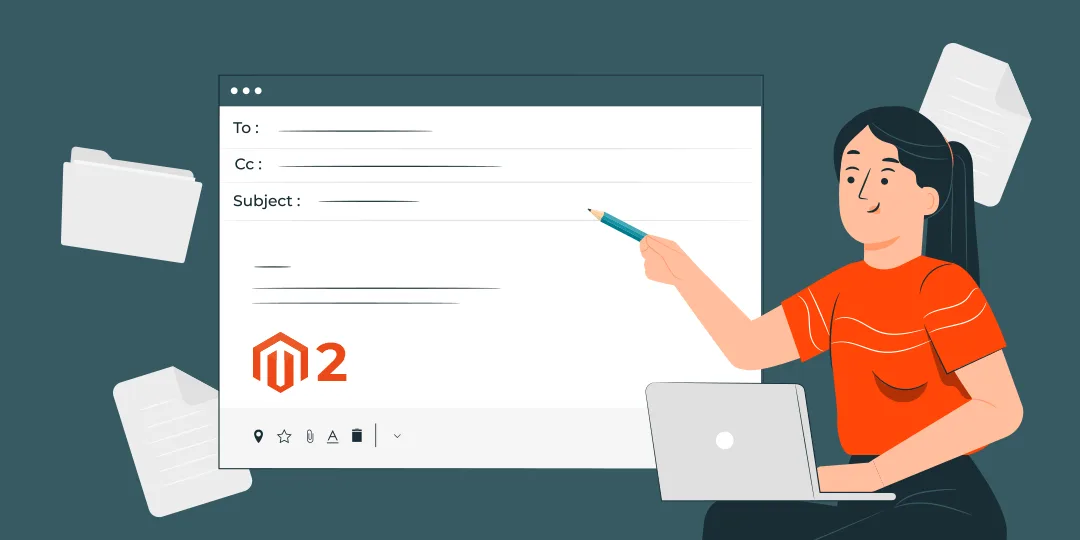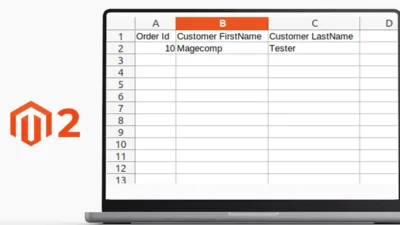Hello Magento Friends,
In this Magento 2 tutorial, I am going to show How to Set Dynamic Email Subject in Magento 2.
eCommerce stores use email marketing campaigns for various purposes. Store owners inform customers about the latest offers, discounts, and new releases via email. Customers communicate with the store for any query or help. 47% of emails are opened based on the subject line. Email subject lines matter a lot for its open rate. Using personalized email subjects helps to get high open rates.
Magento 2 store merchants can make the email subject lines dynamic for a better success rate. Let’s learn How to Set Dynamic Email Subject in Magento 2.
Steps to Set Dynamic Email Subject in Magento 2:
Step 1: Create an email template configuration file at the below path
app\code\Vendor\Extension\etc\email_templates.xml
Then add the below code
<?xml version="1.0"?>
<config xmlns:xsi="http://www.w3.org/2001/XMLSchema-instance" xsi:noNamespaceSchemaLocation="urn:magento:module:Magento_Email:etc/email_templates.xsd">
<template id="your_email_template_id" label="Label of your template file" file="email_file.html" type="html" module="Vendor_Extension" area="frontend"/>
</config>Step 2: Now create an email template file at the following path
app\code\Vendor\Extension\view\frontend\email\email_file.html
Now add the below code snippet
<!--@subject {{var subject|raw }}@-->
<!--@vars
{"var customerName":"Customer Name",
"var customerEmail":"Customer Email",
"var customerComment":"Comment"}
@-->
<body style="background:#F6F6F6; font-family:Verdana, Arial, Helvetica, sans-serif; font-size:12px; margin:0; padding:0;">
<div style="background:#F6F6F6; font-family:Verdana, Arial, Helvetica, sans-serif; font-size:12px; margin:0; padding:0;">
<table cellspacing="0" cellpadding="0" border="0" height="100%" width="100%">
<tr>
<td align="center" valign="top" style="padding:20px 0 20px 0">
<table bgcolor="FFFFFF" cellspacing="0" cellpadding="10" border="0" width="650" style="border:1px solid #E0E0E0;">
<tr>
<td valign="top" colspan="5">
<h1 style="font-size:22px; font-weight:normal; line-height:22px; margin:0 0 11px 0;">Hello Admin,</h1>
</td>
</tr>
<tr>
<td valign="top" colspan="5">
<p style="border:1px solid #E0E0E0; font-size:12px; line-height:16px; margin:0; padding:13px 18px; background:#F9F9F9;">You Have Received New Query As Bellow.<p>
</td>
</tr>
<tr>
<td valign="top" colspan="5">
<p style="border:1px solid #E0E0E0; font-size:12px; line-height:16px; margin:0; padding:13px 18px; background:#F9F9F9;">Customer Name : <strong>{{var customerName}}</strong></td>
</tr>
<tr>
<td valign="top" colspan="5">
<p style="border:1px solid #E0E0E0; font-size:12px; line-height:16px; margin:0; padding:13px 18px; background:#F9F9F9;">Customer Email : <strong>{{var customerEmail}}</strong></td>
</tr>
<tr>
<td valign="top" colspan="5">
<p style="border:1px solid #E0E0E0; font-size:12px; line-height:16px; margin:0; padding:13px 18px; background:#F9F9F9;">Customer Comment : <strong>{{var customerComment}}</strong></td>
</tr>
<tr>
<td valign="top" colspan="5">
<p style="border:1px solid #E0E0E0; font-size:12px; line-height:16px; margin:0; padding:13px 18px; background:#F9F9F9; text-align:center;"><strong>Thank you.</strong></td>
</tr>
</table>
</td>
</tr>
</table>
</div>
</body>Step 3: Now the template is ready and we will do the code for sending mail.
Go to your controller file
app\code\Vendor\Extension\Controller\Index\Index.php
Add the below-mentioned code
<?php
namespace Vendor\Extension\Controller\Index;
use Magento\Framework\App\Action\Context;
use Magento\Store\Model\StoreManagerInterface;
use Magento\Framework\Mail\Template\TransportBuilder;
use Magento\Framework\Translate\Inline\StateInterface;
class Index extends \Magento\Framework\App\Action\Action
{
protected $transportBuilder;
protected $storeManager;
protected $inlineTranslation;
protected $state;
public function __construct(
Context $context,
StoreManagerInterface $storeManager,
TransportBuilder $transportBuilder,
StateInterface $state)
{
$this->transportBuilder = $transportBuilder;
$this->storeManager = $storeManager;
$this->inlineTranslation = $state;
parent::__construct($context);
}
public function execute()
{
$templateId = 'your_email_template_id'; // template id
$fromEmail = 'admin@gmail.com'; // sender Email id
$toEmail = 'test.magecomp@gmail.com'; // receiver email id
$subject = 'your_dynamic_subject'; // Dynamic subject
try
{
// template variables pass here
$templateVars = [
'subject' => $subject,
'customerName' => 'Test',
'customerEmail' => 'Magecomp',
'customerComment' => 'Test Comment'
];
$storeId = $this->storeManager->getStore()->getId();
$this->inlineTranslation->suspend();
$storeScope = \Magento\Store\Model\ScopeInterface::SCOPE_STORE;
$templateOptions = [
'area' => \Magento\Framework\App\Area::AREA_FRONTEND,
'store' => $storeId
];
$transport = $this->transportBuilder->setTemplateIdentifier($templateId, $storeScope)
->setTemplateOptions($templateOptions)
->setTemplateVars($templateVars)
->setFrom($fromEmail)
->addTo($toEmail)
->getTransport();
$transport->sendMessage();
$this->inlineTranslation->resume();
$this->messageManager->addSuccessMessage(__('Your Email Sent successfully'));
$this->_redirect('*/*/');
}
catch (\Exception $e)
{
$this->inlineTranslation->resume();
$this->messageManager->addErrorMessage(__('We can\'t process your request' . $e->getMessage()));
$this->_redirect('*/*/');
}
}
}Conclusion:
This way you can Set Dynamic Email Subject in Magento 2 and improve the open rate of your email marketing campaigns. If you are unable to perform the steps correctly, you can freely reach out to me with your problem through the comments.
Share the article with those who are in search of making their email marketing campaigns a total success.
Happy Coding!








